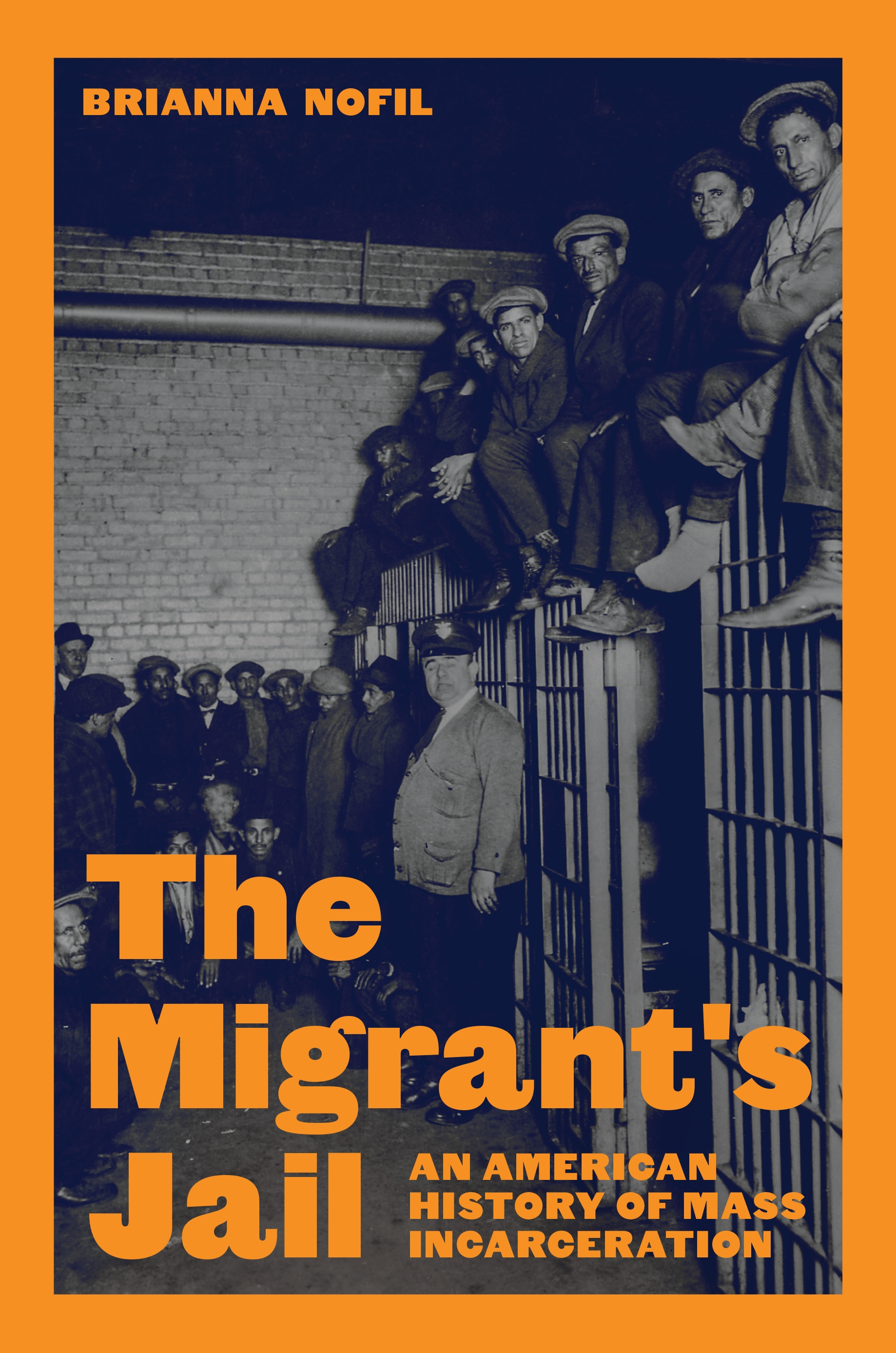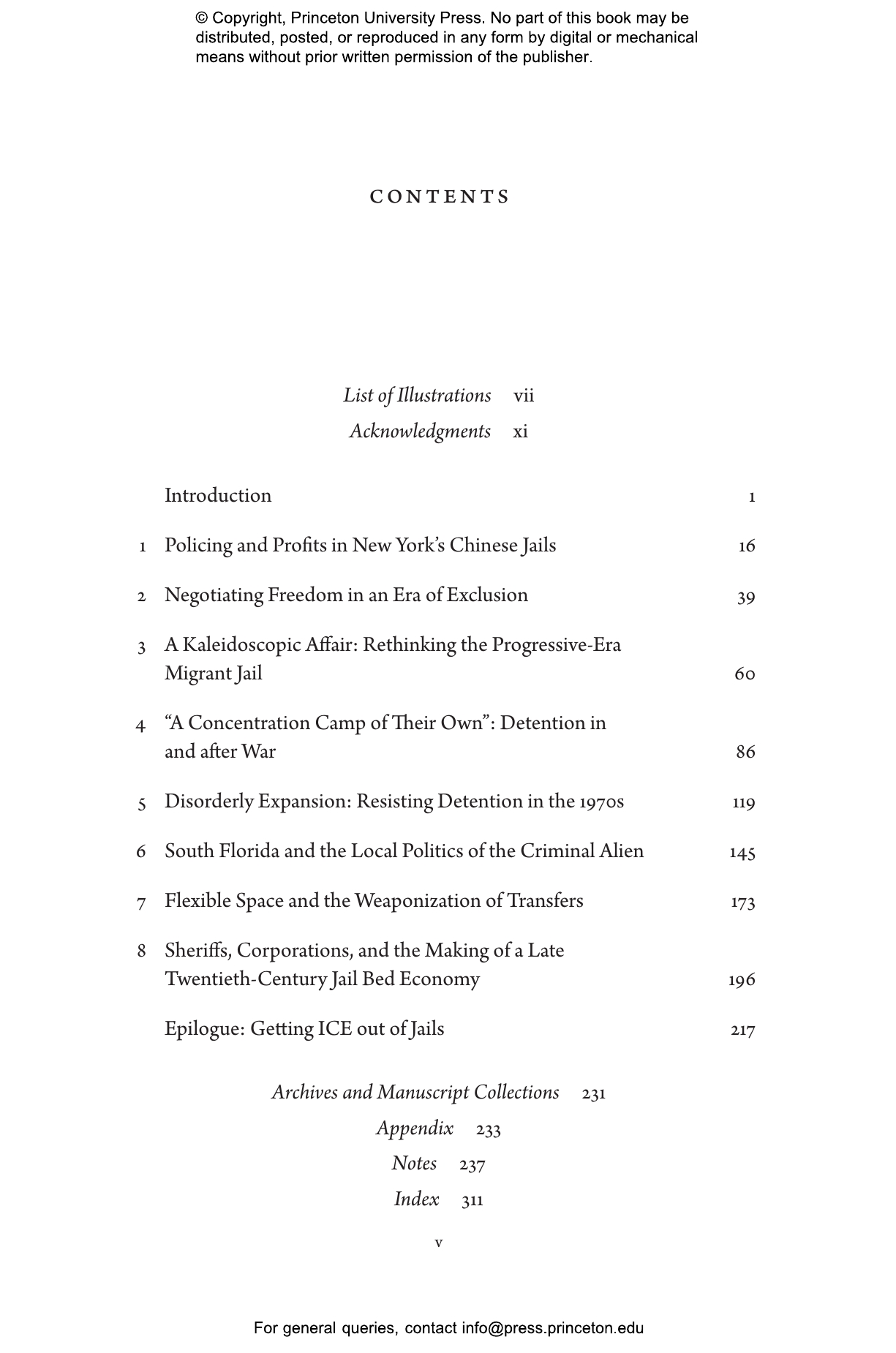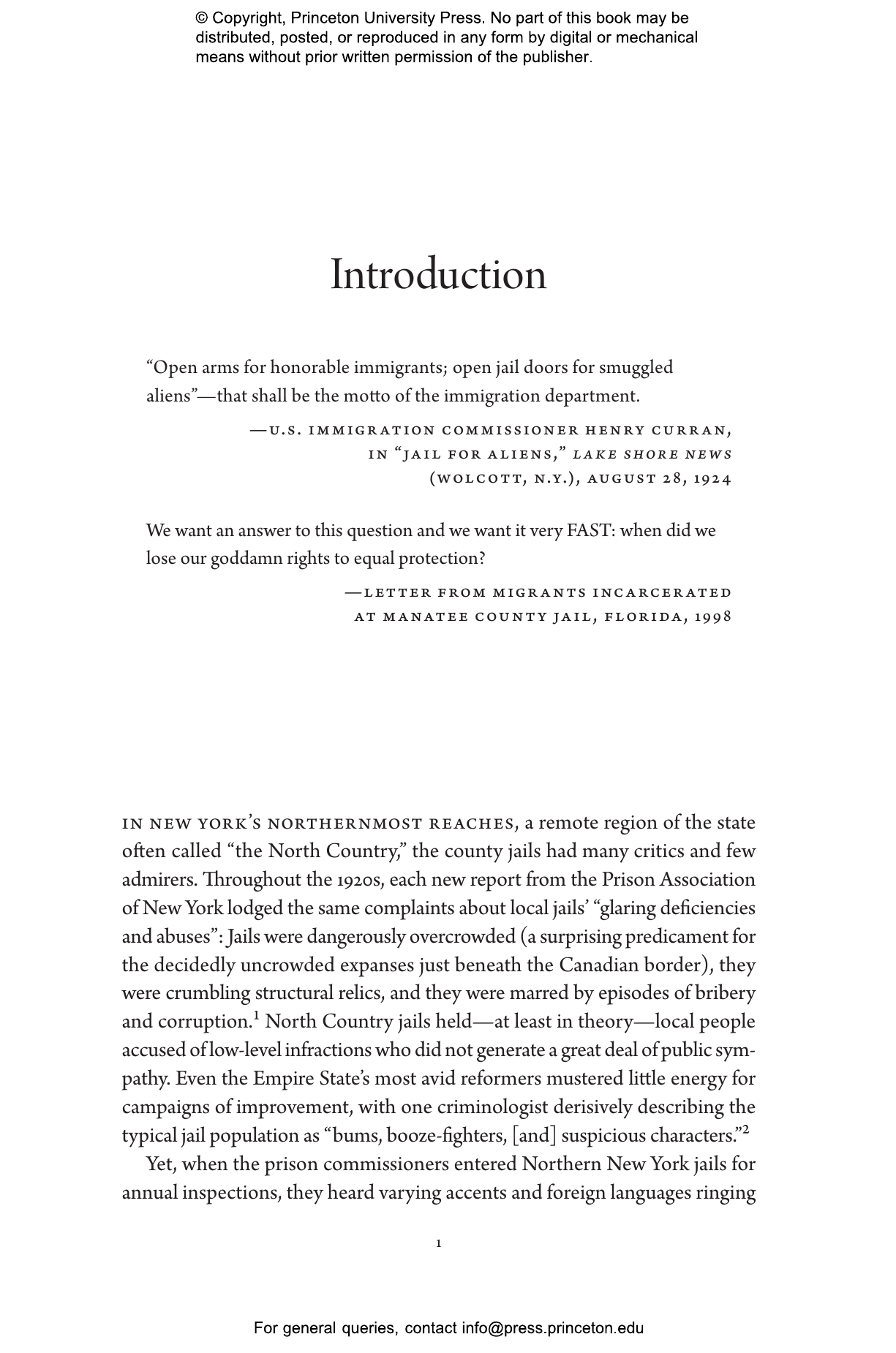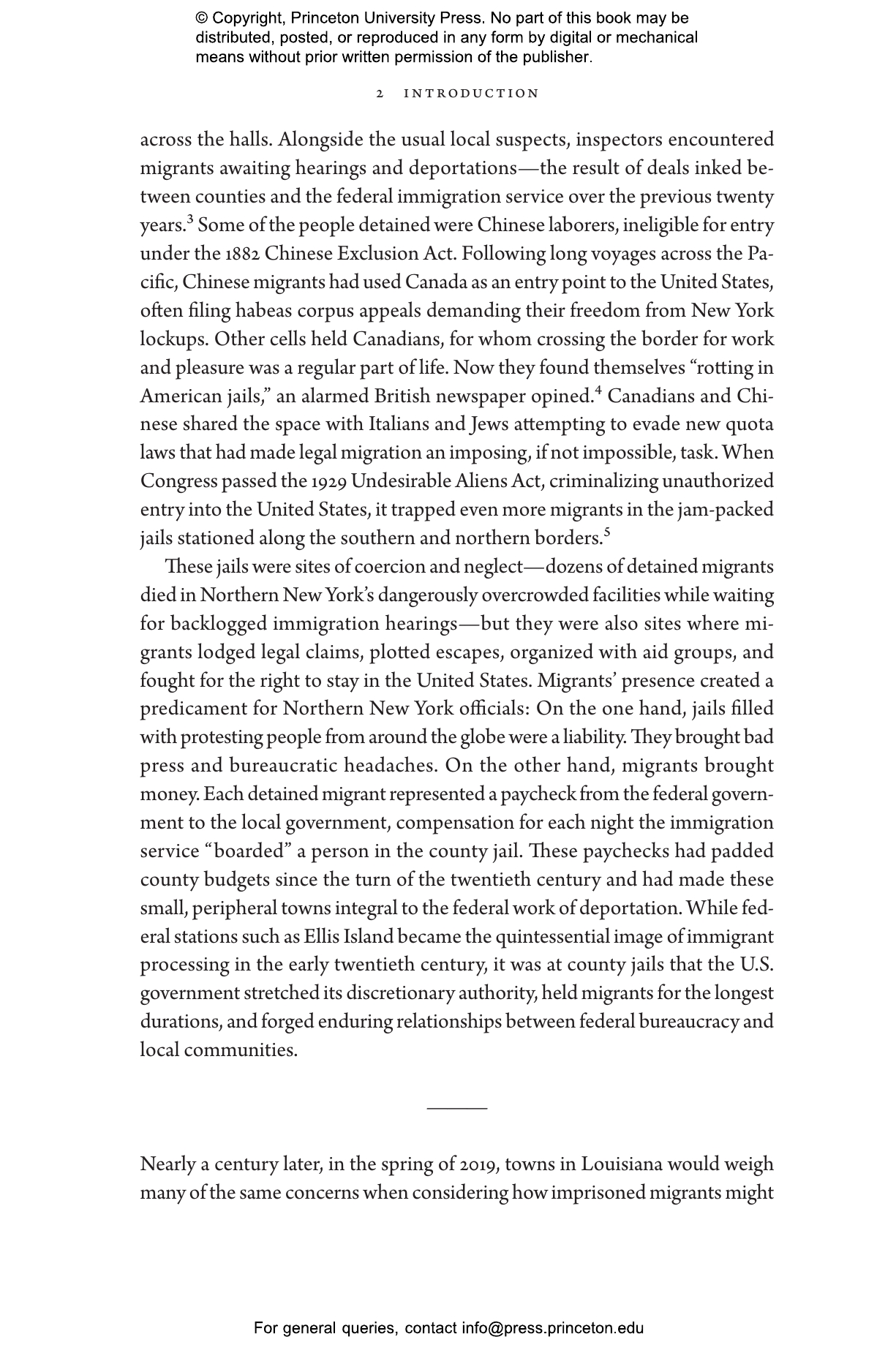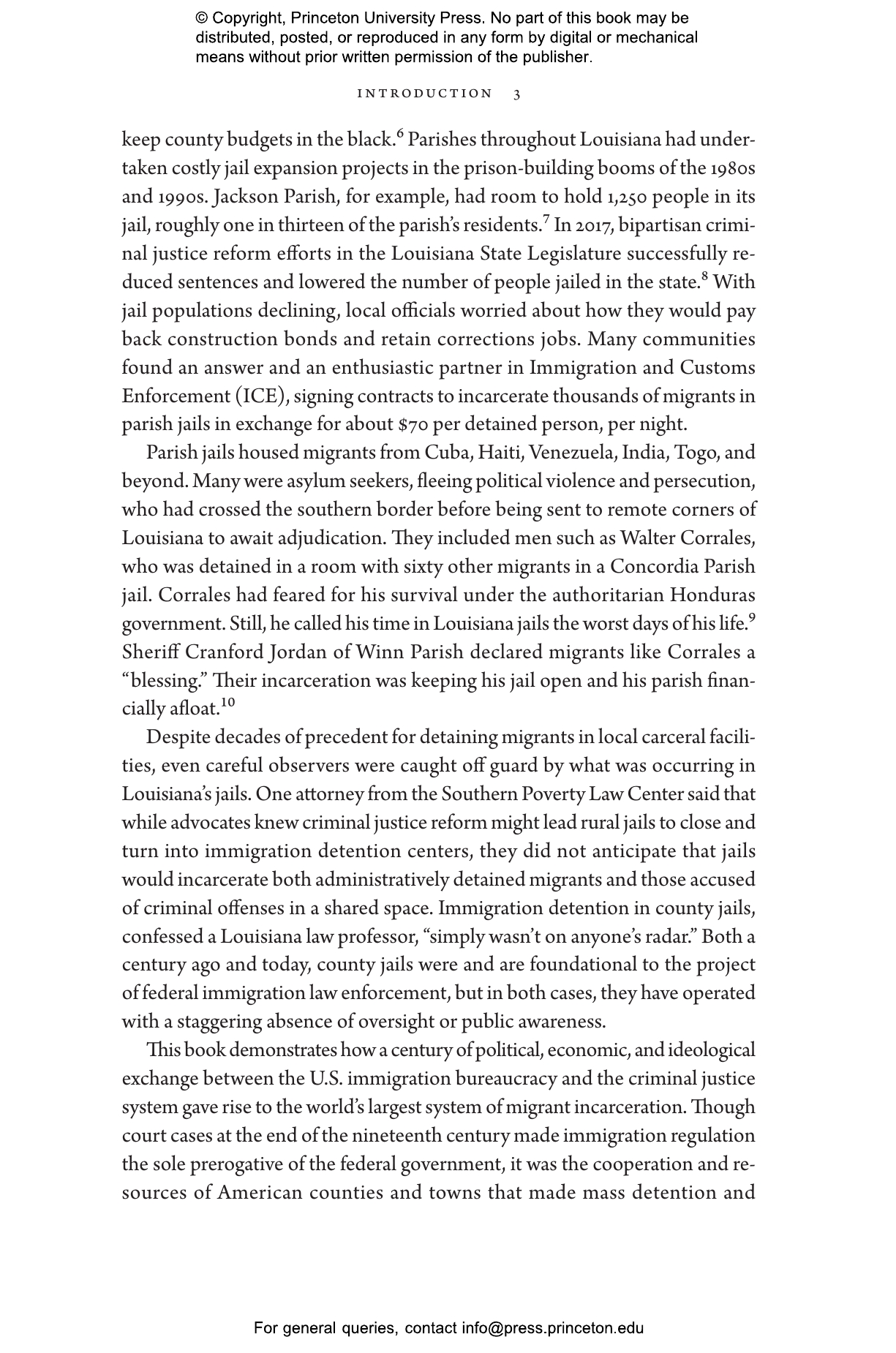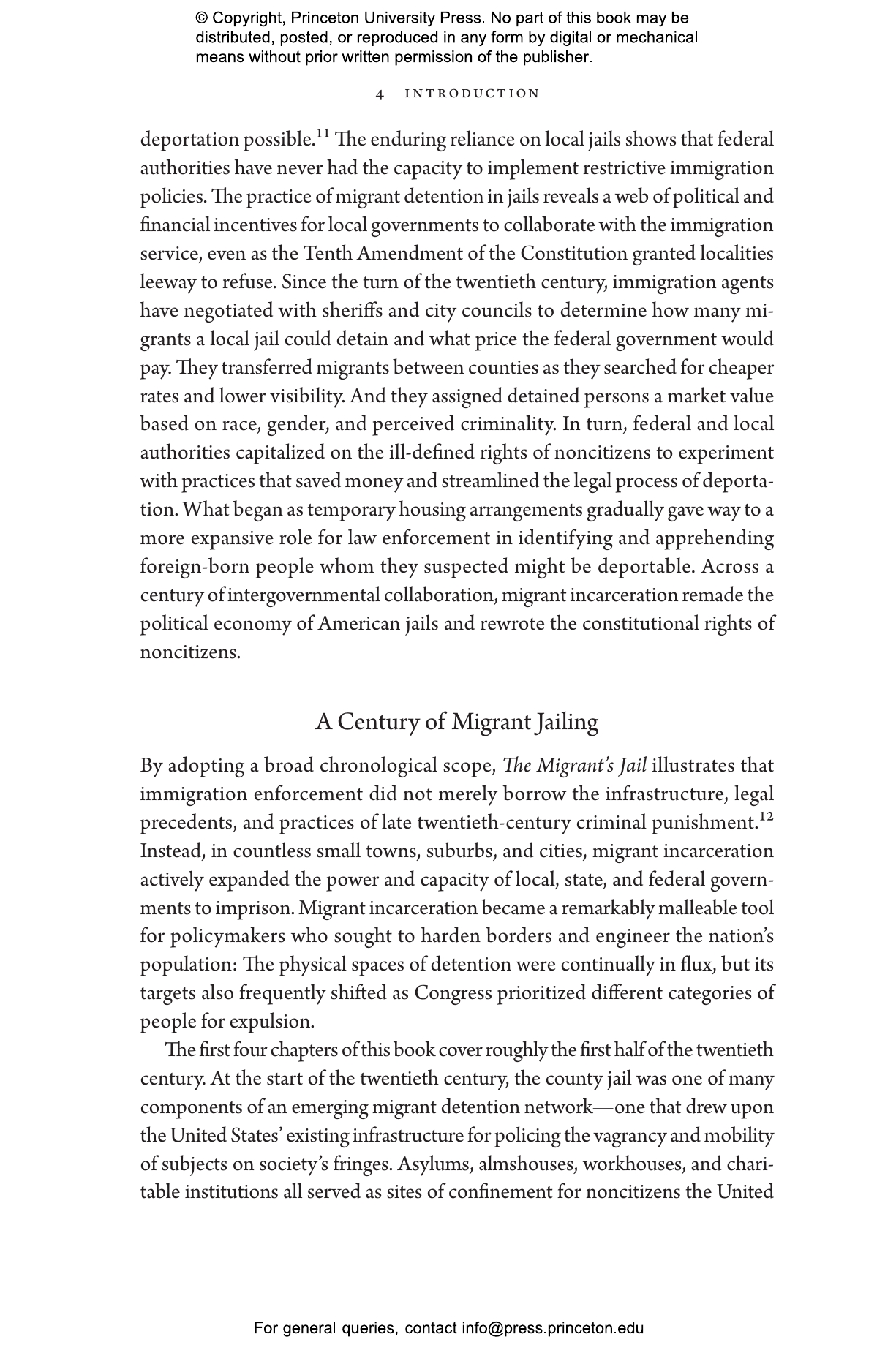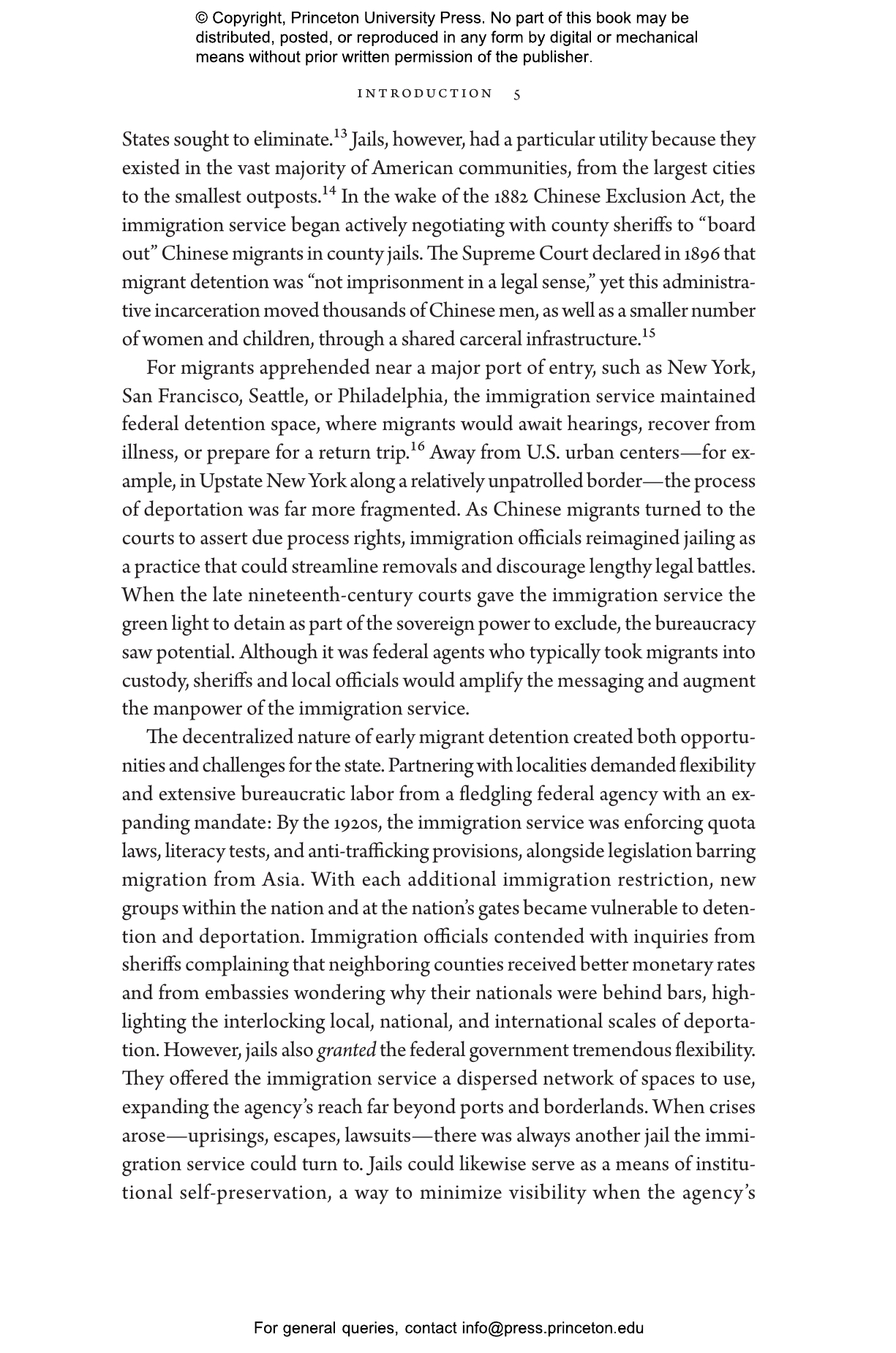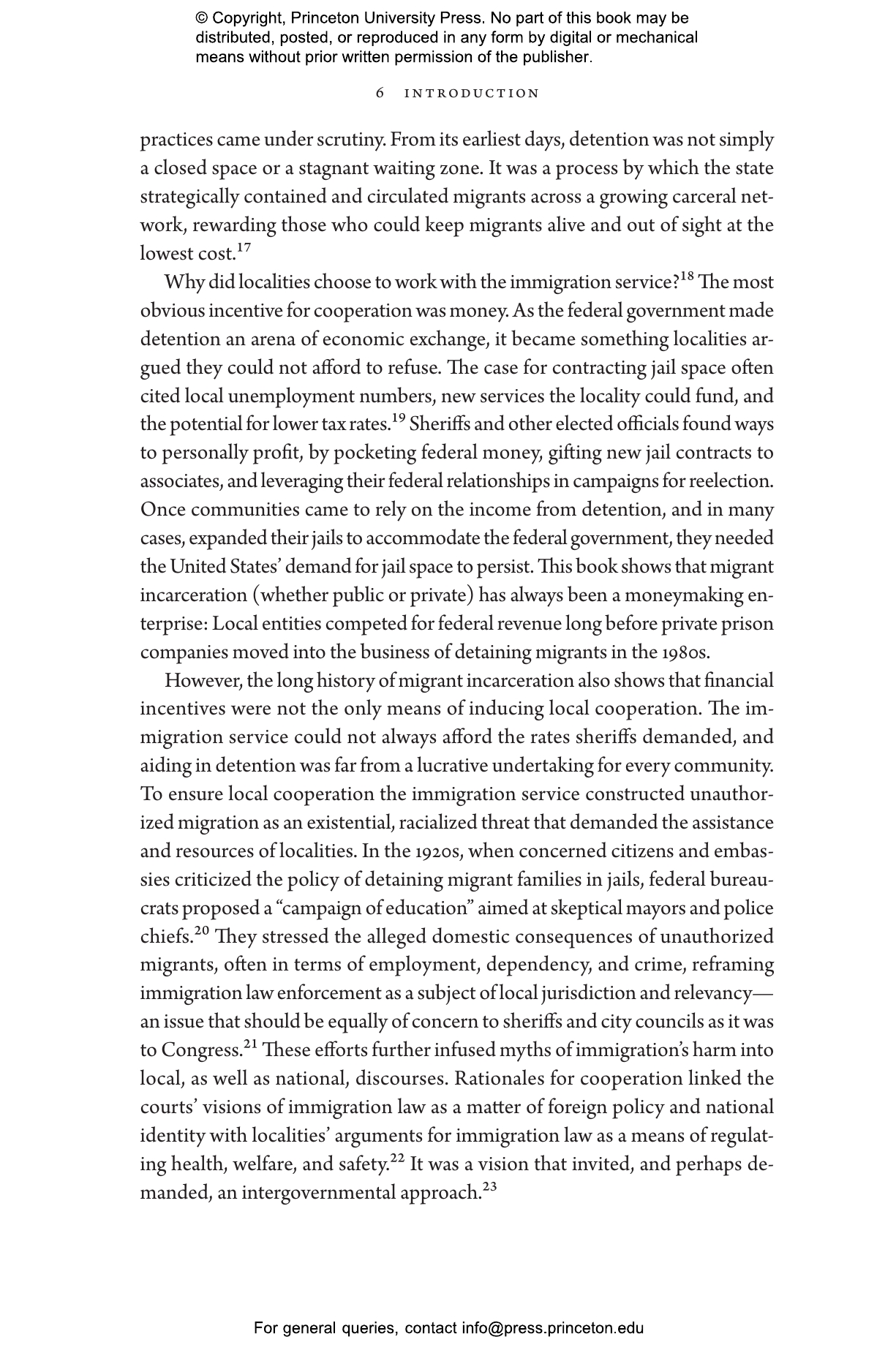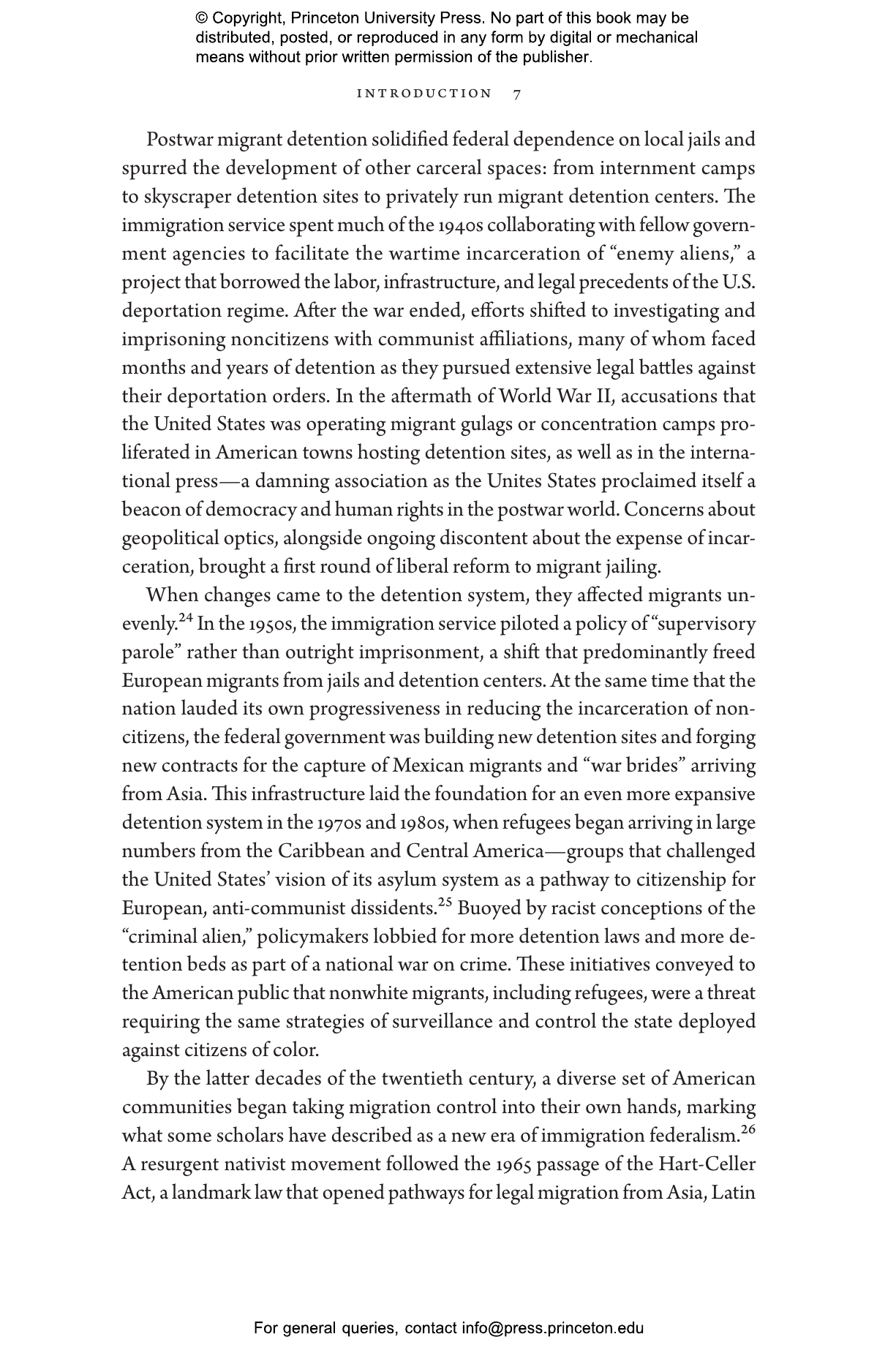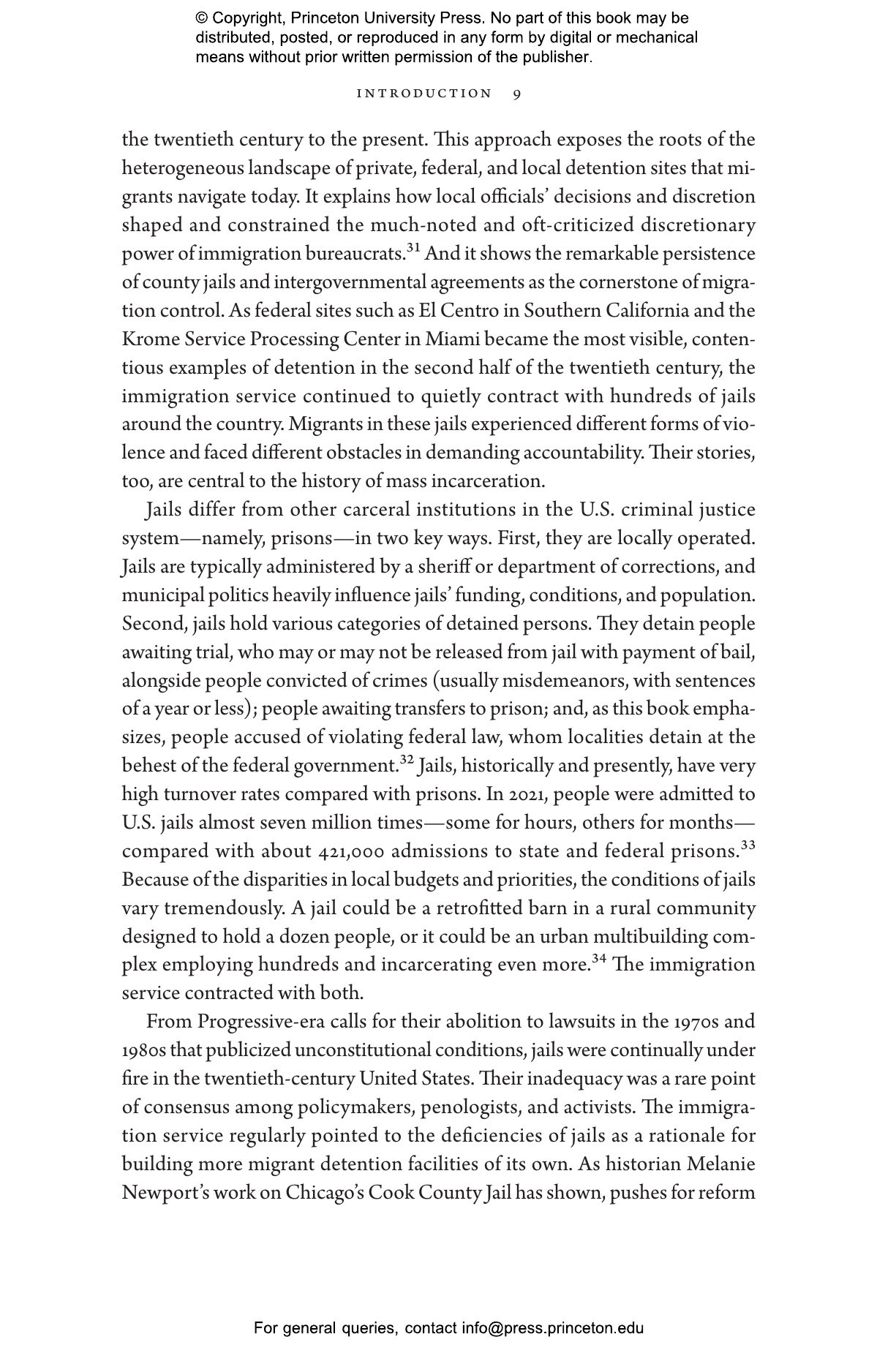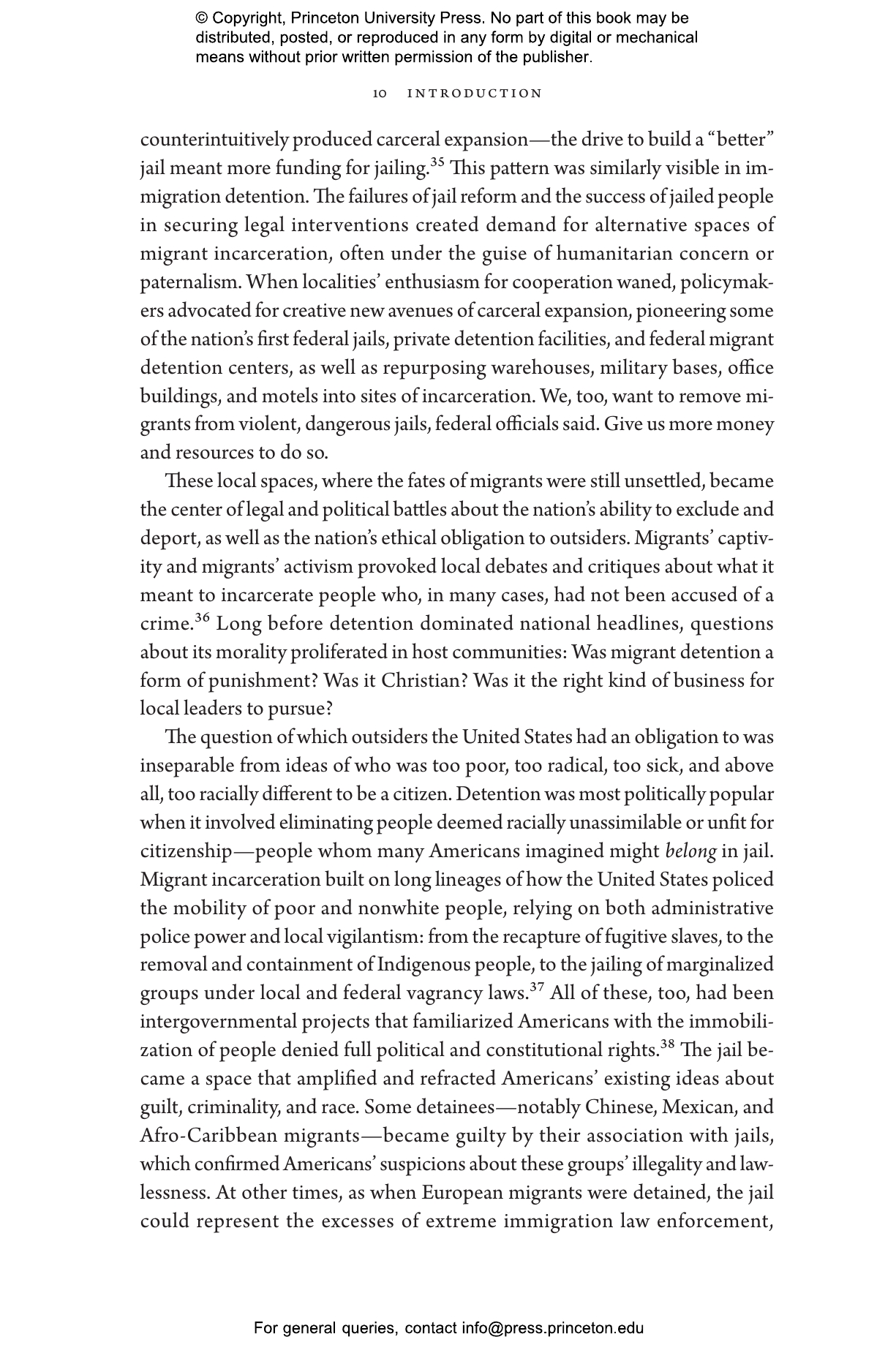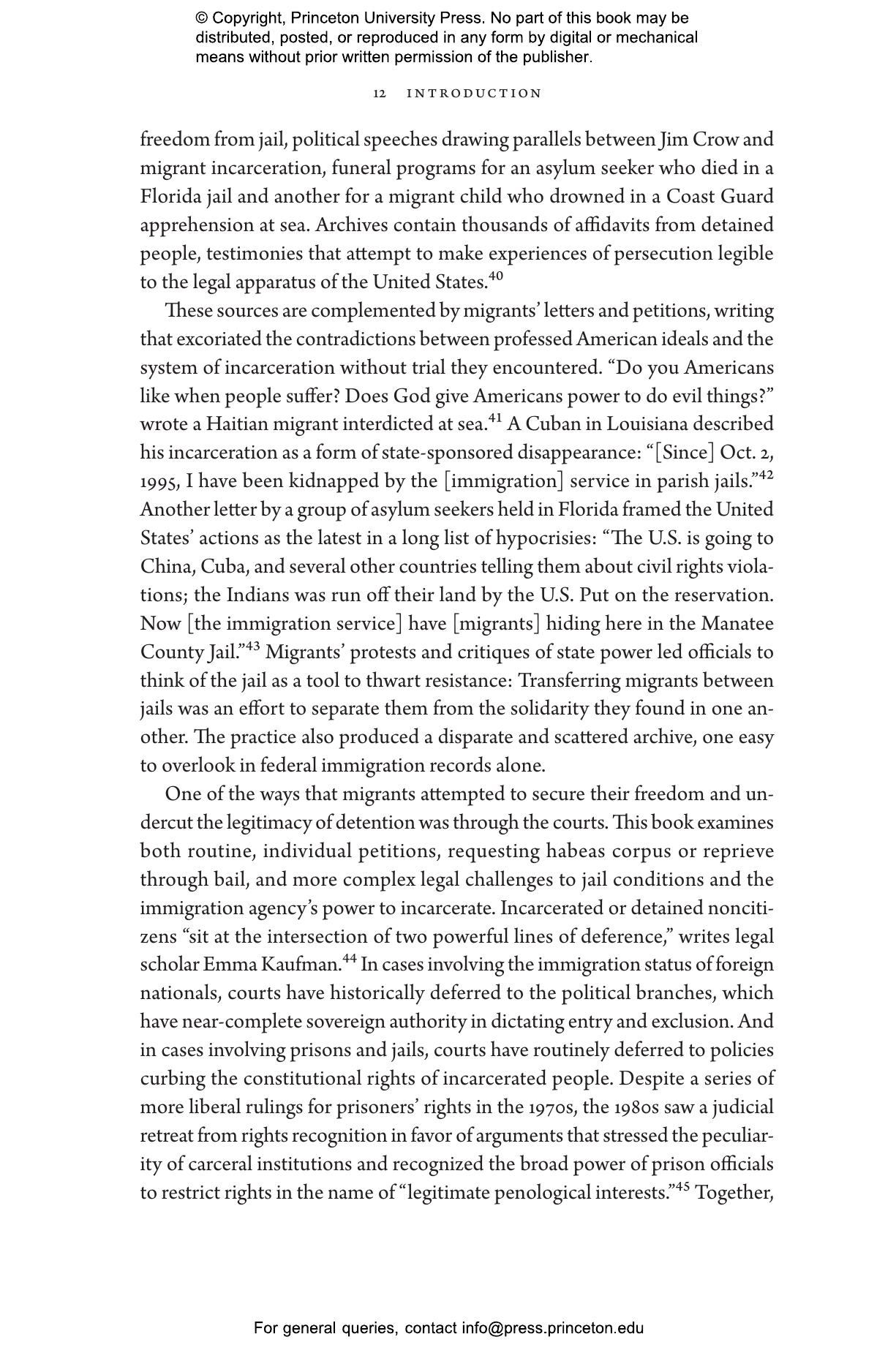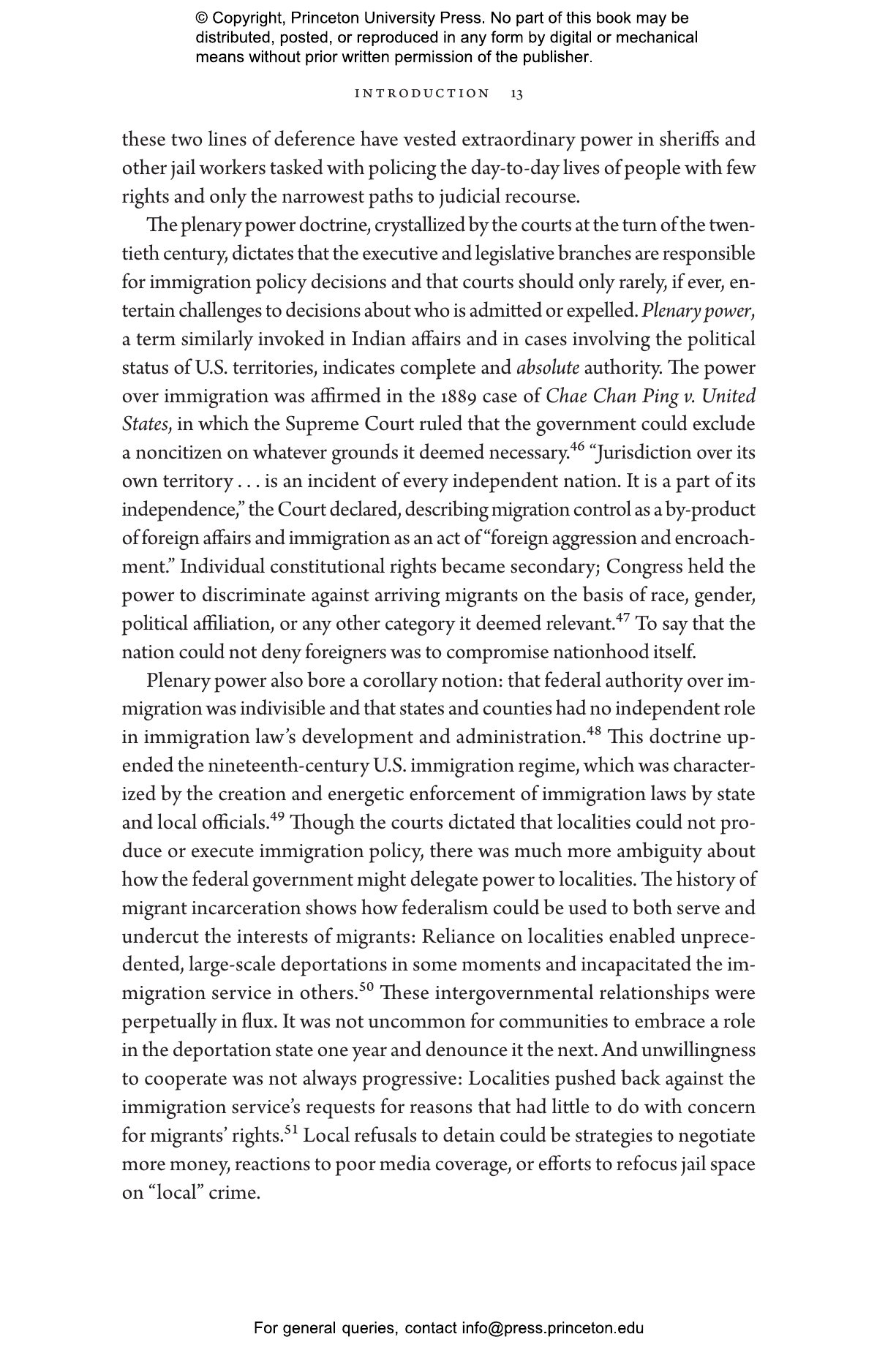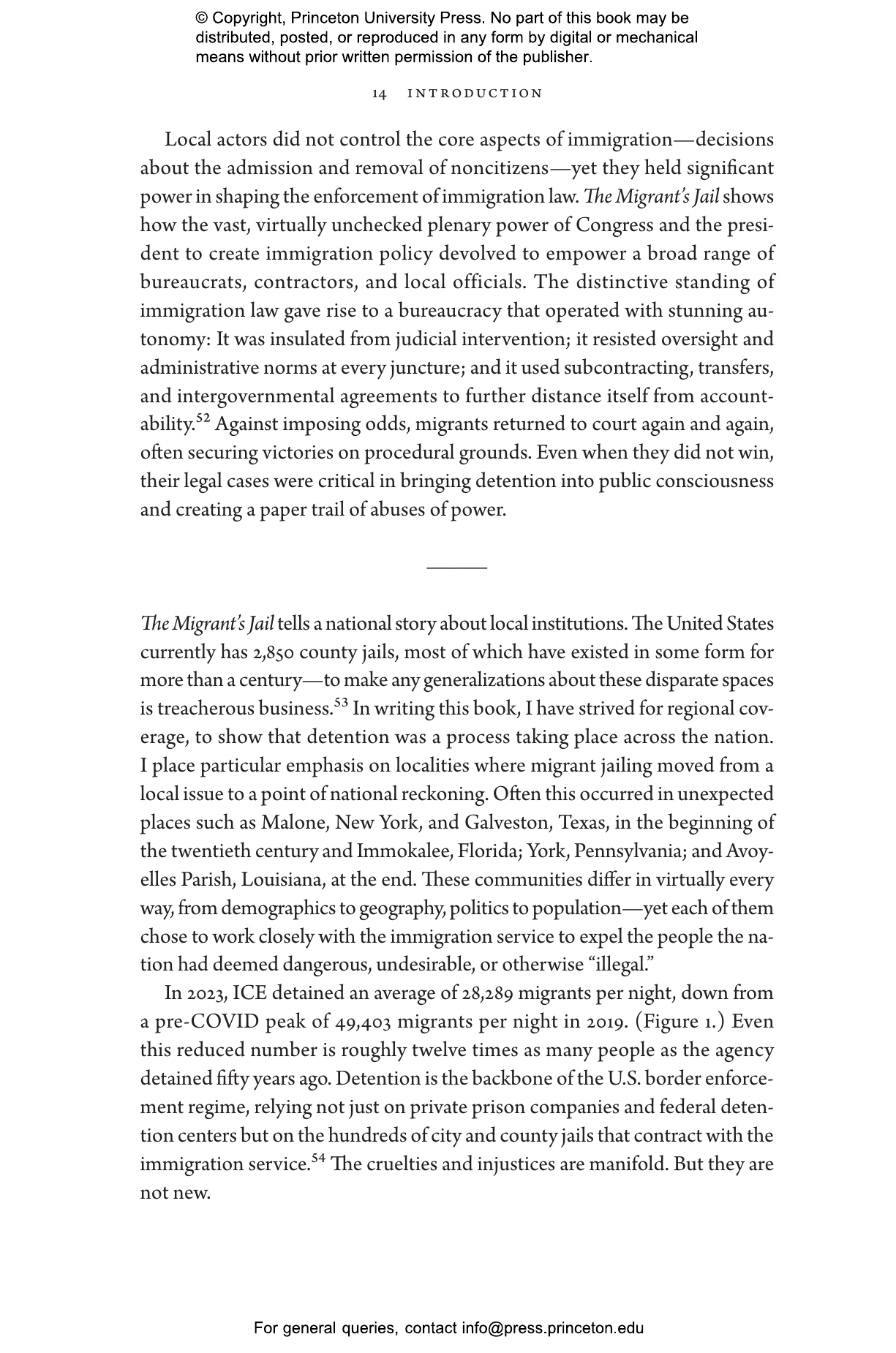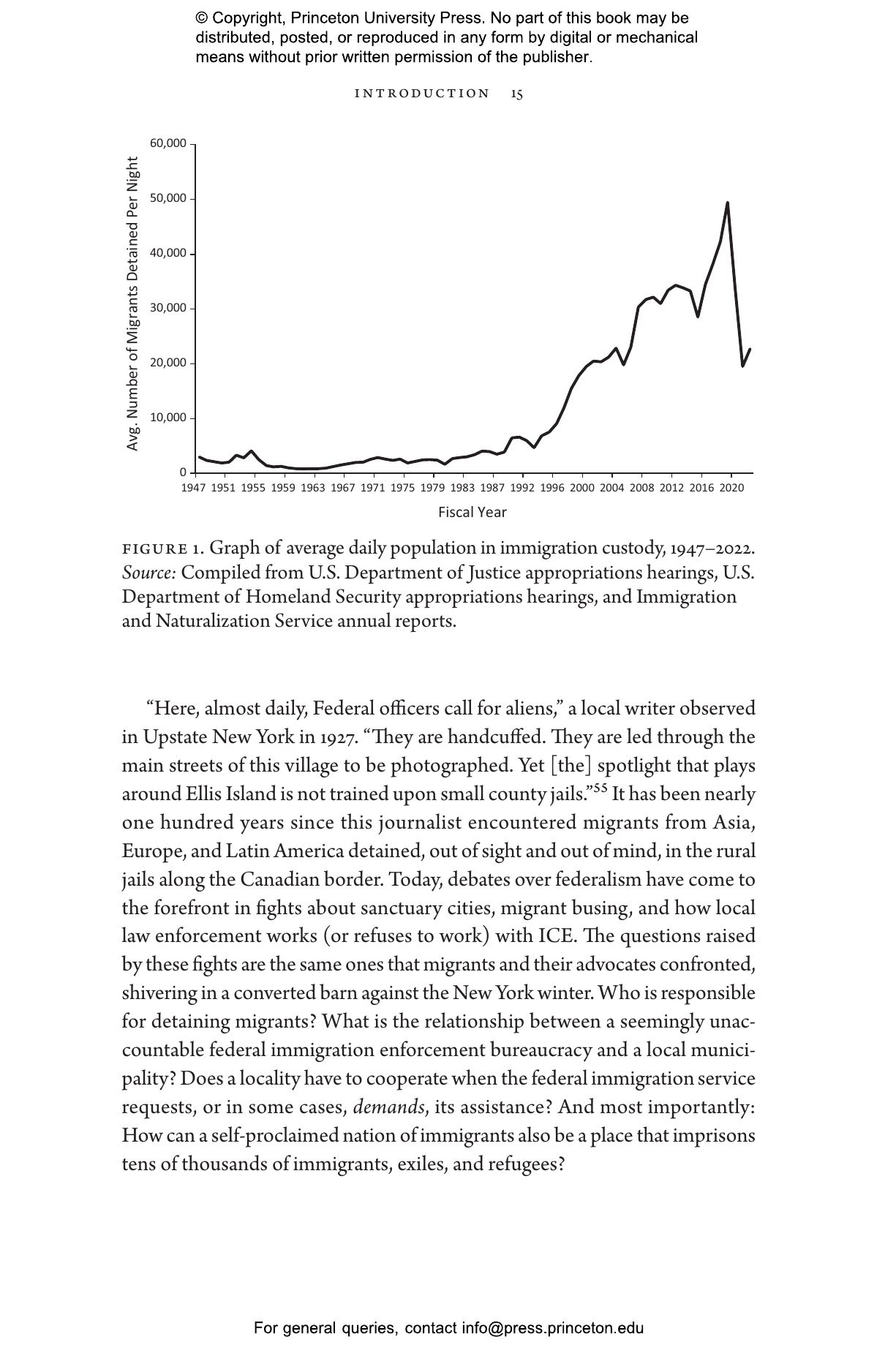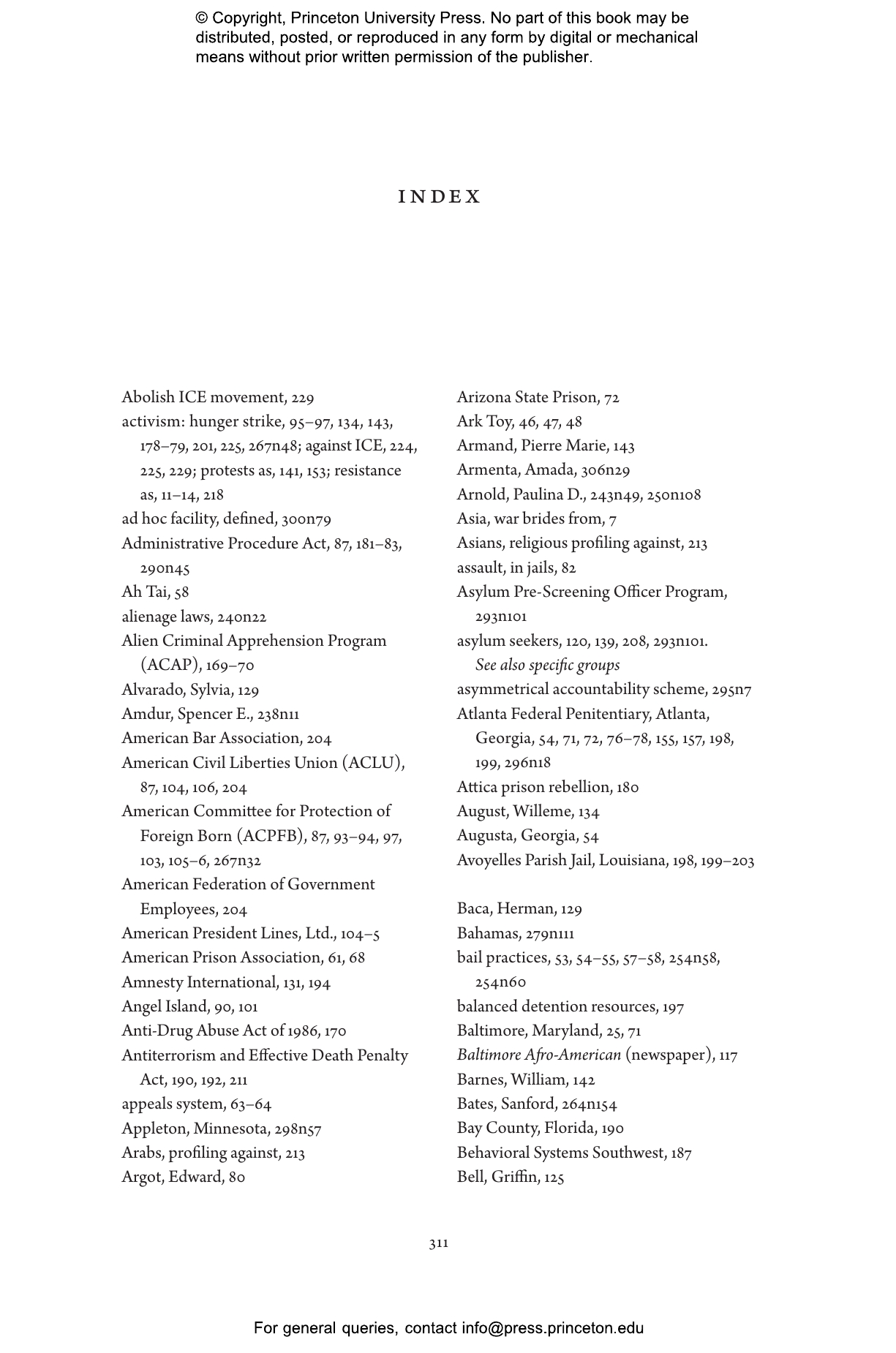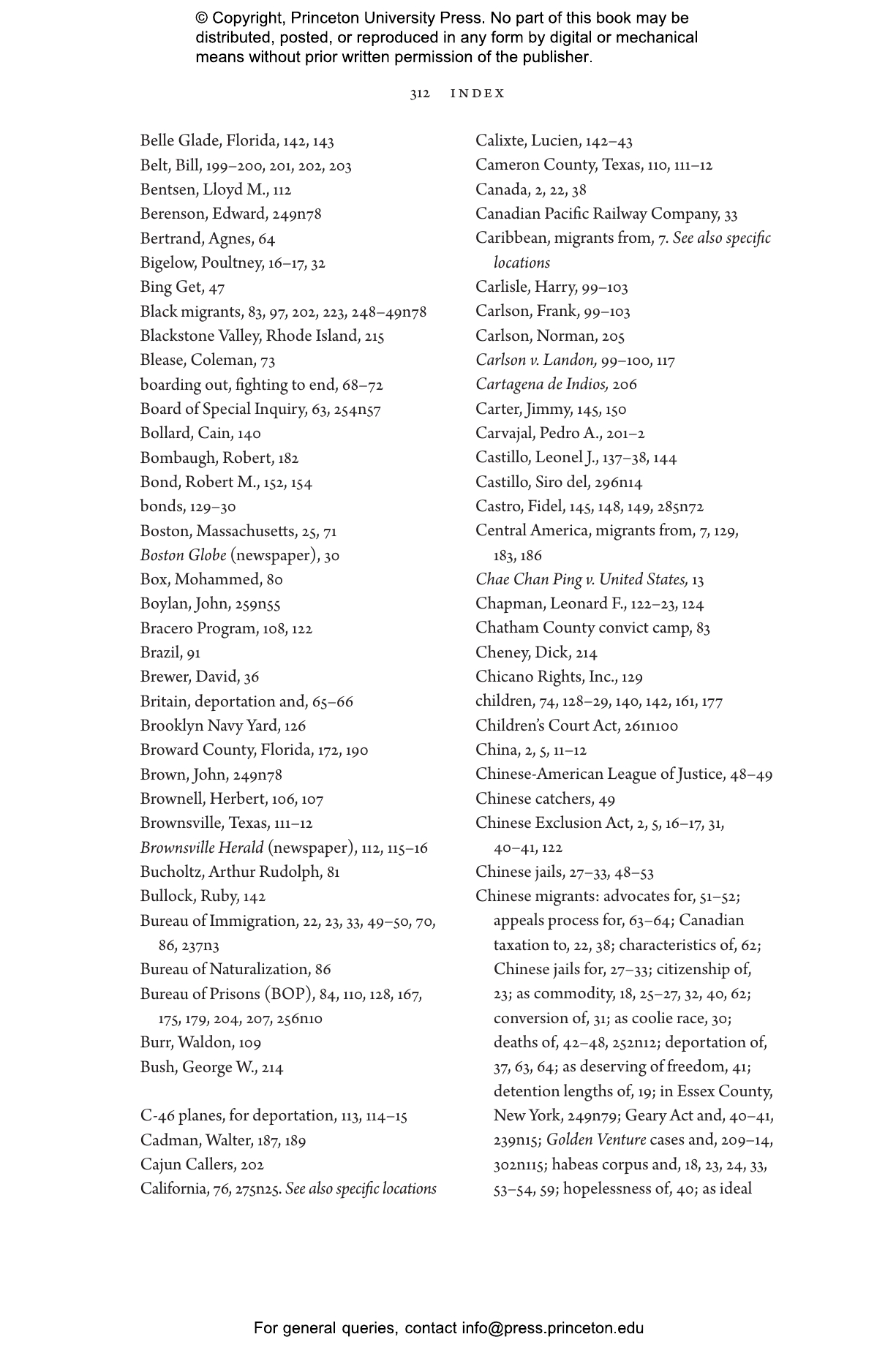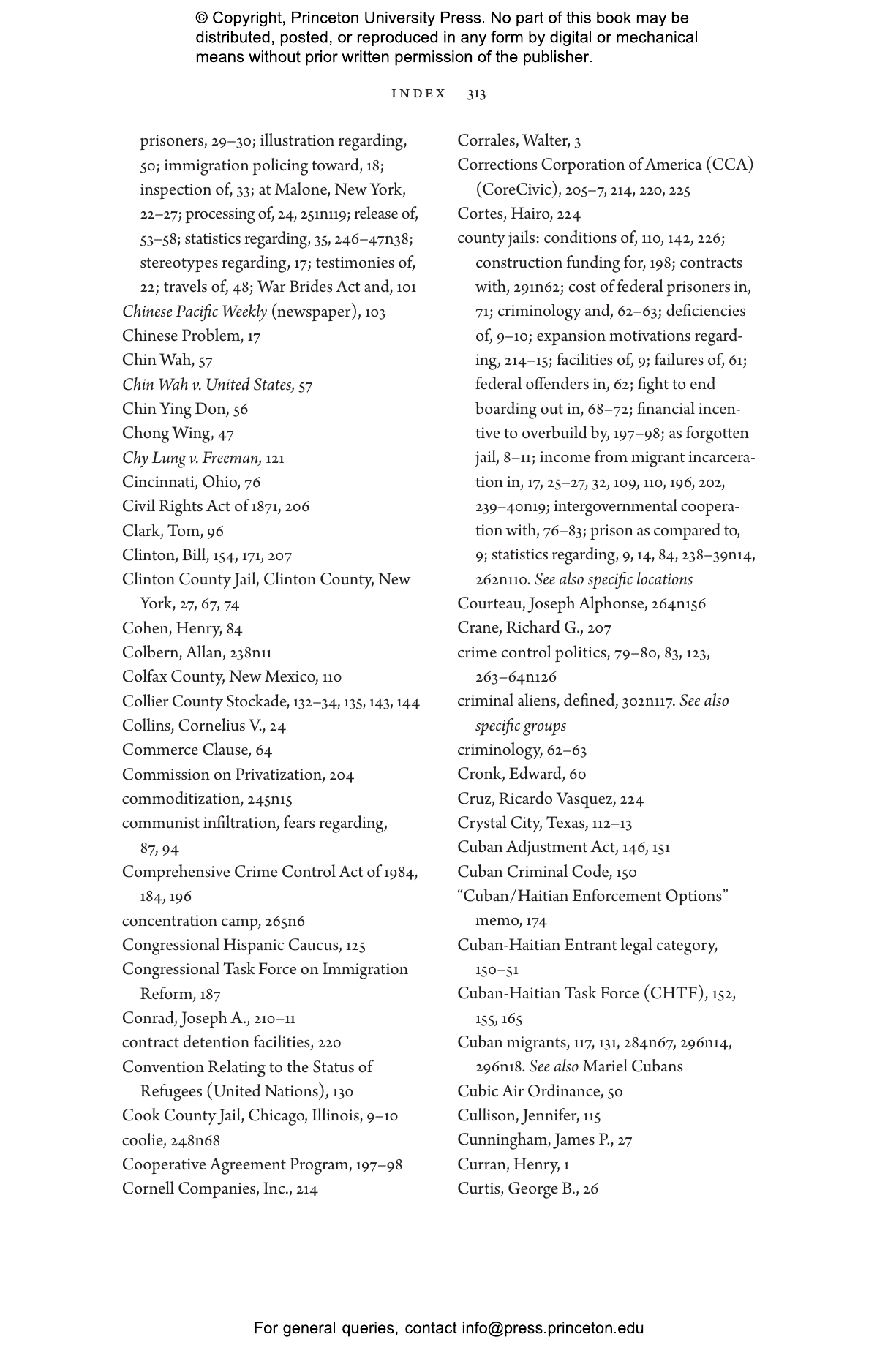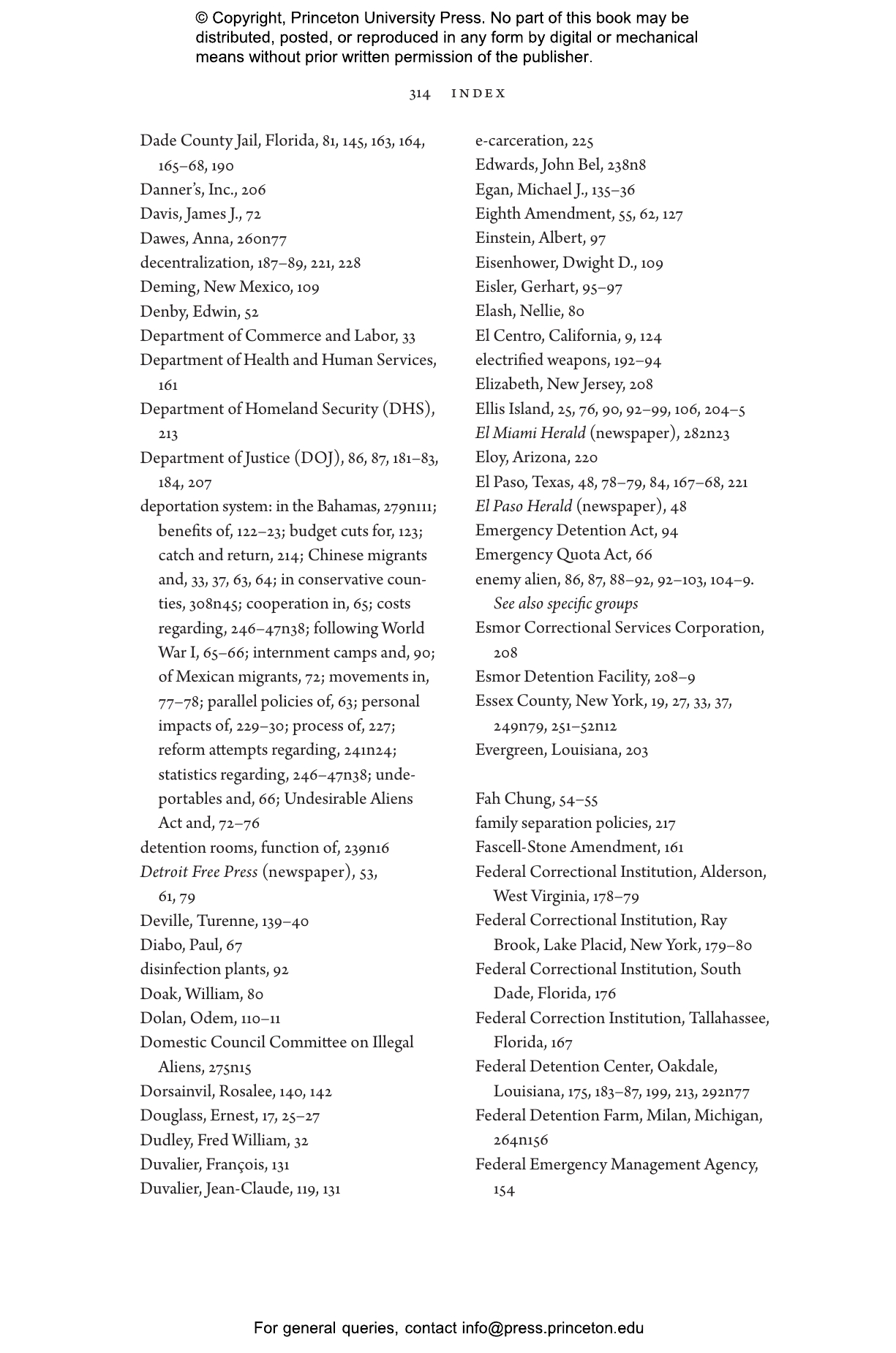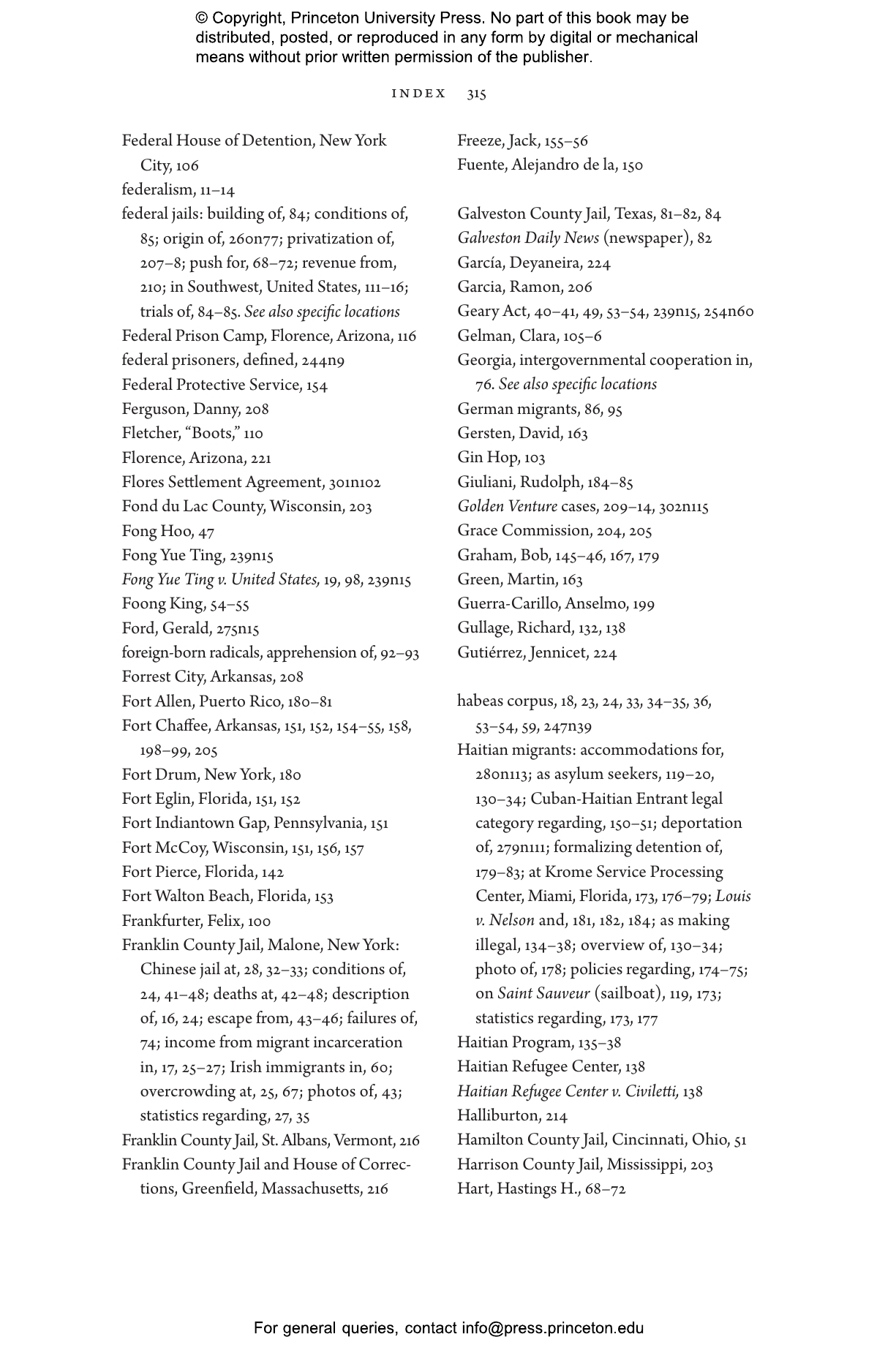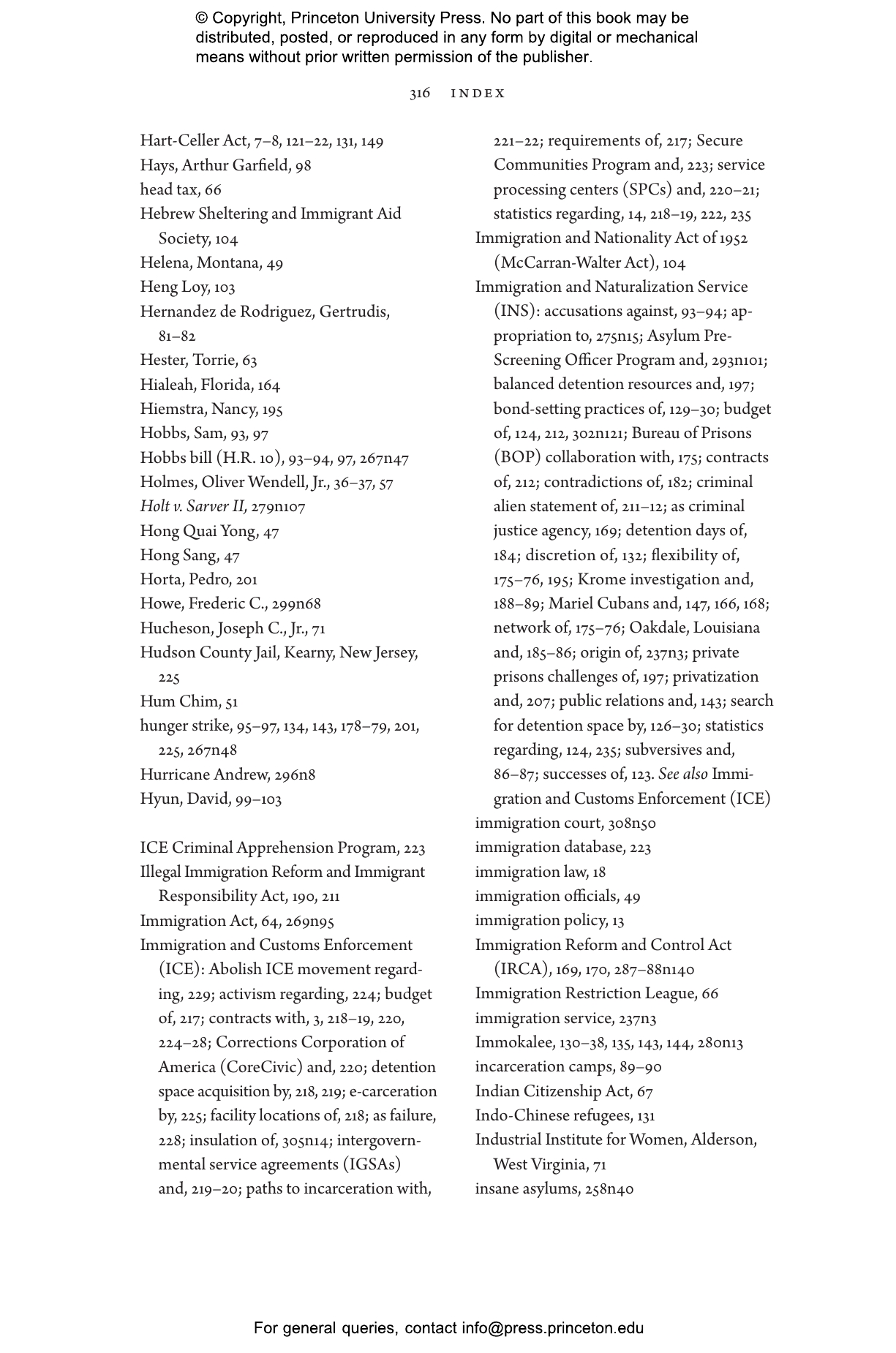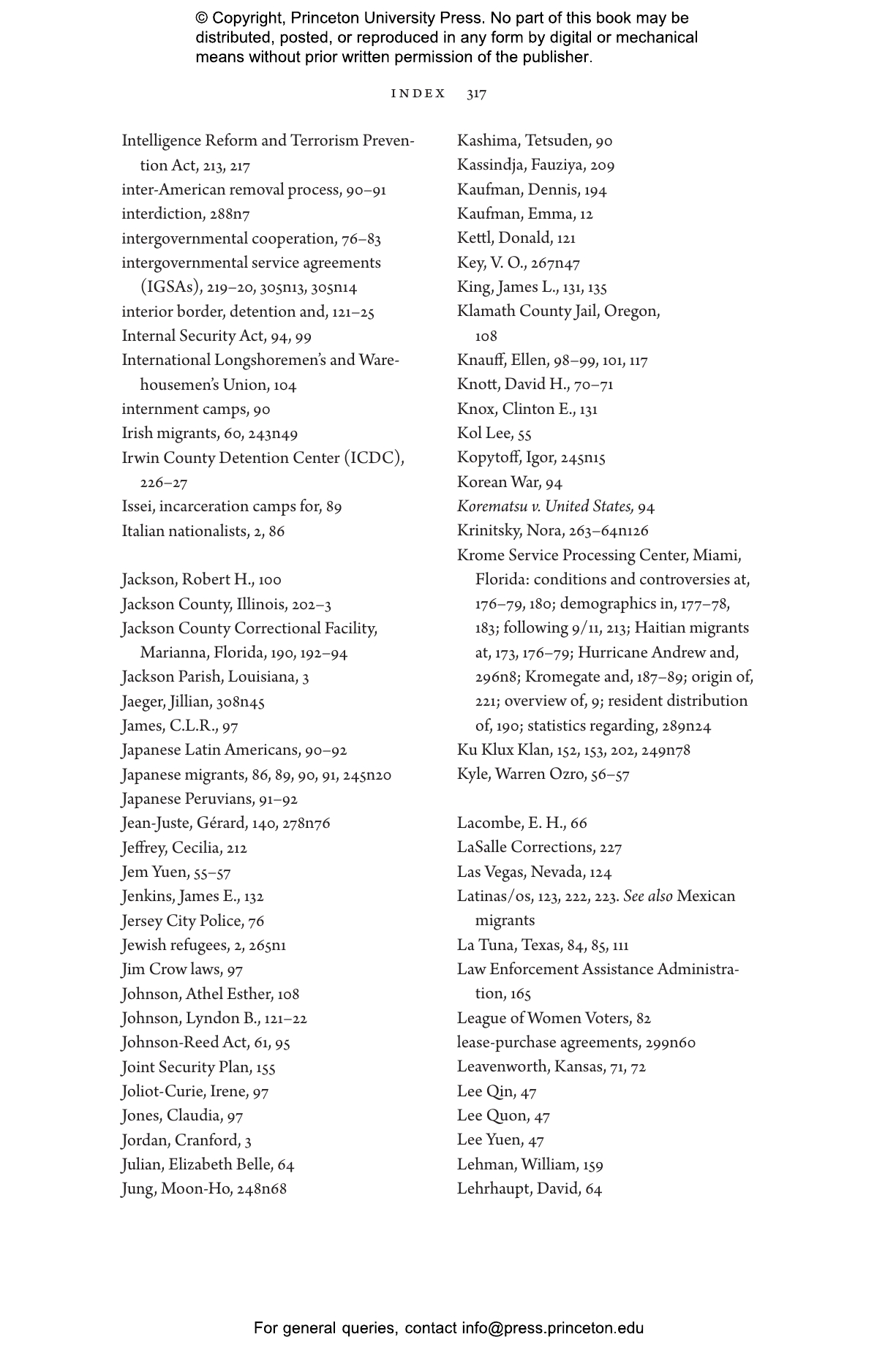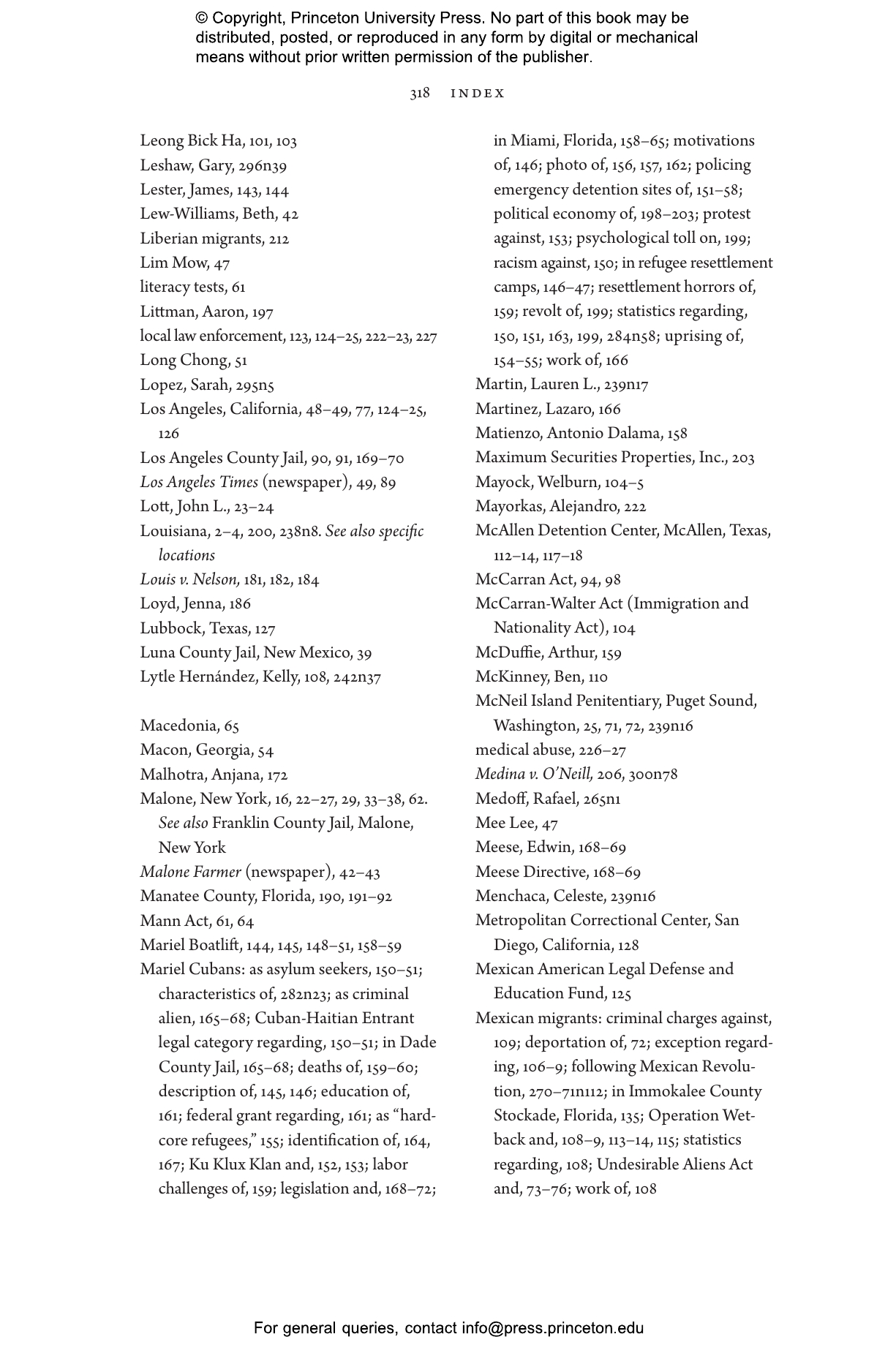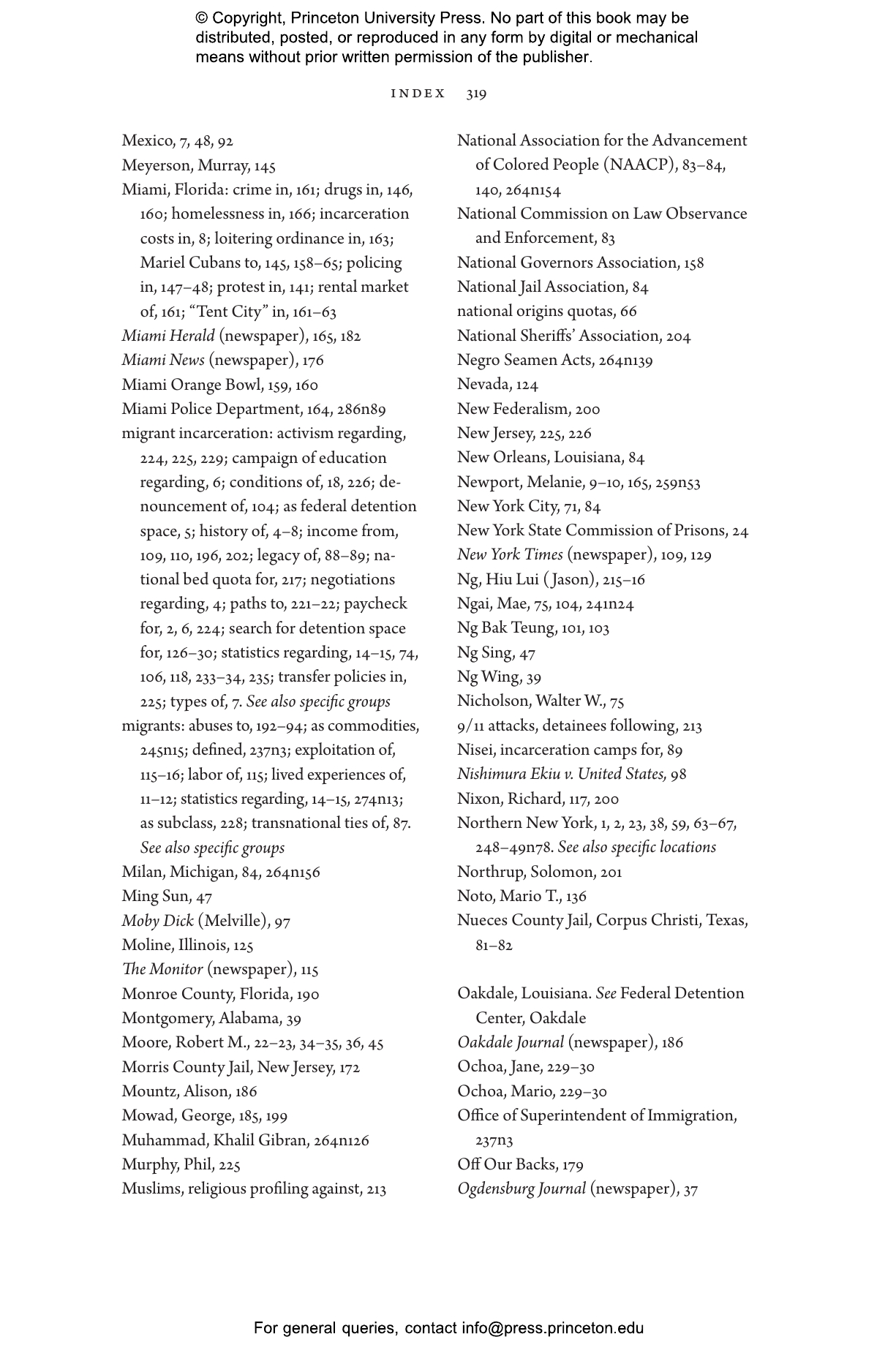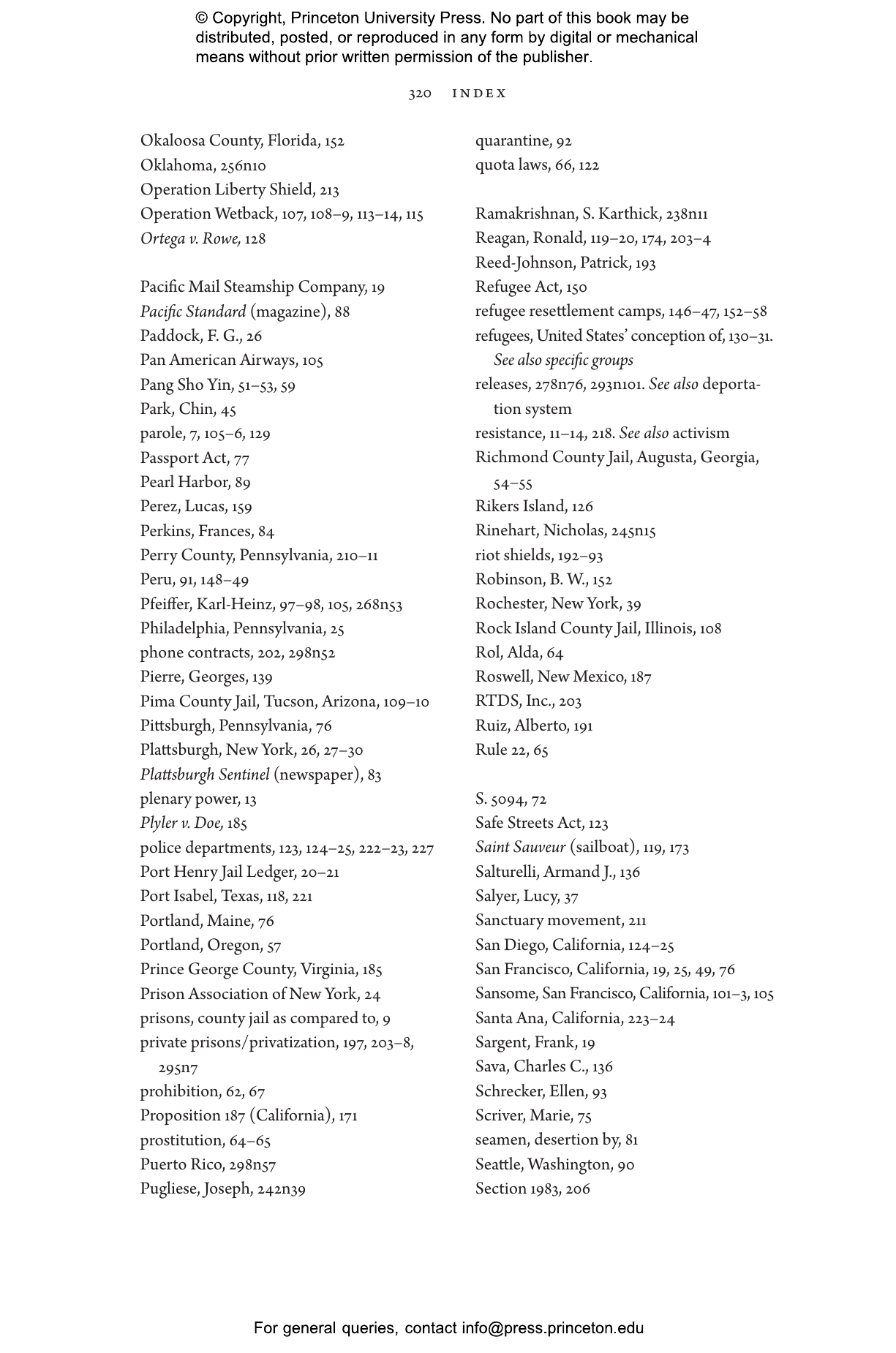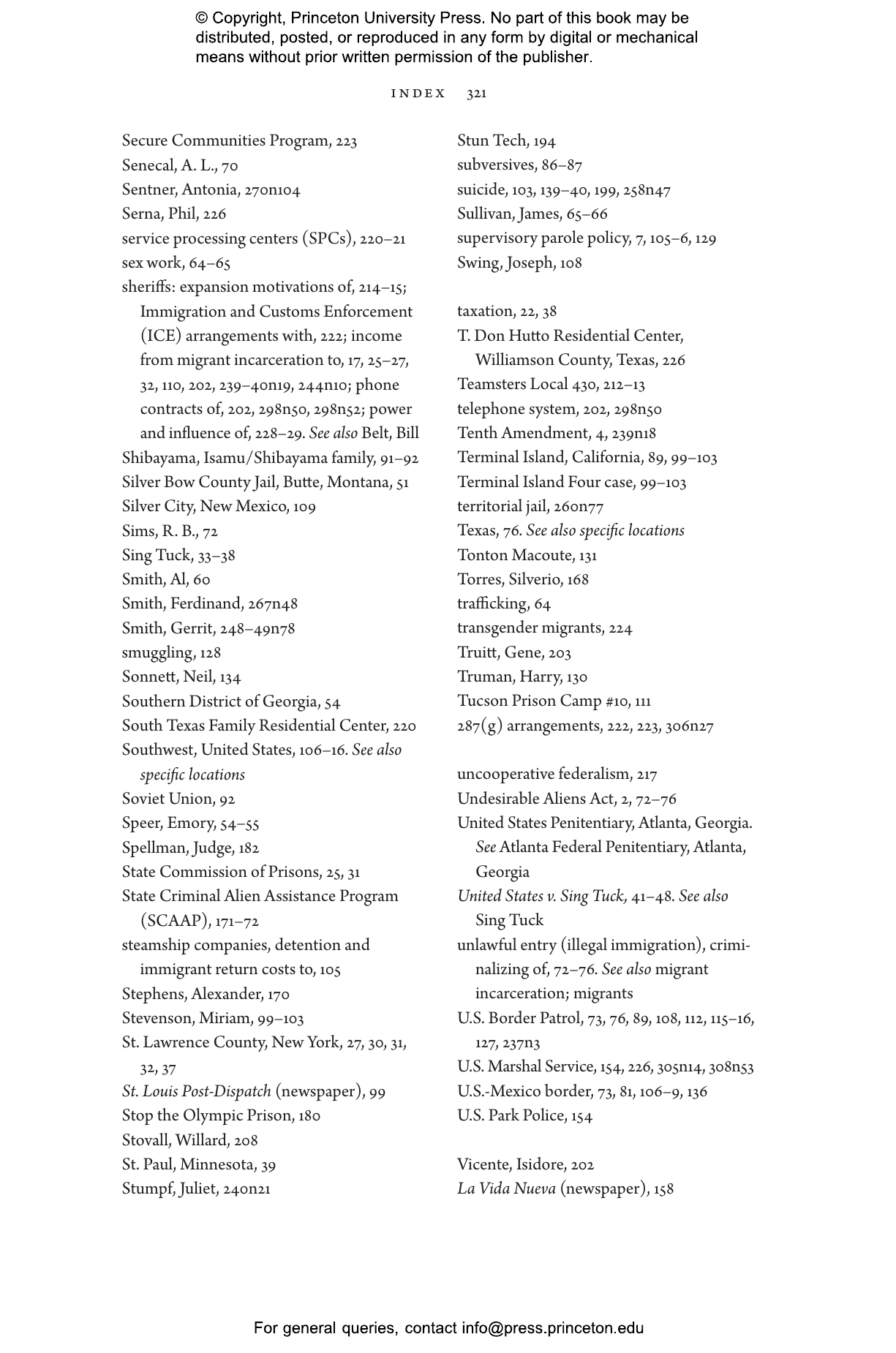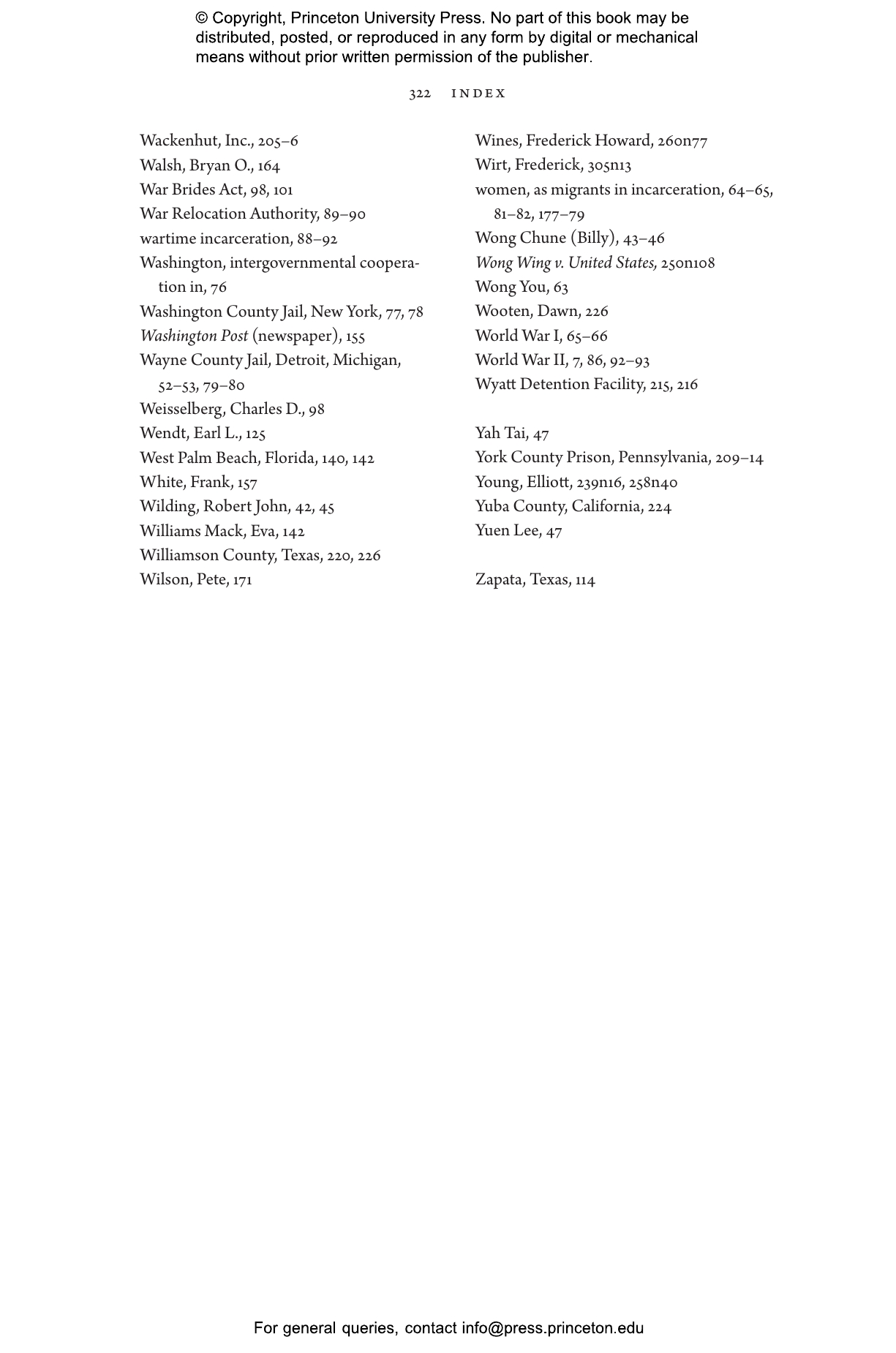The Migrant's Jail: An American History of Mass Incarceration


Hardcover
ebook (EPUB via app)
- Sale Price:
- $16.00/£14.00
- Price:
-
$32.00/£28.00 - ISBN:
- Published:
- Oct 22, 2024
- Copyright:
- 2024
- 31 b/w illus. 3 tables.
50% off with code BLOOM50
ebook (PDF via app)
-
Audio and ebooks (EPUB and PDF) purchased from this site must be accessed on the 91��ɫ app. After purchasing, you will an receive email with instructions to access your purchase.
About audio and ebooks - Request Exam Copy
Today, U.S. Immigration & Customs Enforcement (ICE) detains an average of 37,000 migrants each night. To do so, they rely on, and pay for, the use of hundreds of local jails. But this is nothing new: the federal government has been detaining migrants in city and county jails for more than 100 years. In The Migrant’s Jail, Brianna Nofil examines how a century of political, ideological, and economic exchange between the U.S. immigration bureaucracy and the criminal justice system gave rise to the world’s largest system of migrant incarceration. Migrant detention is not simply an outgrowth of mass incarceration; rather, it has propelled carceral state–building and fostered intergovernmental policing efforts since the turn of the twentieth century.
From the incarceration of Chinese migrants in New York in the 1900s and 1910s to the jailing of Caribbean refugees in Gulf South lockups of the 1980s and 1990s, federal immigration authorities provided communities with a cash windfall that they used to cut taxes, reward local officials, and build bigger jails—which they then had incentive to fill. Trapped in America’s patchwork detention networks, migrants turned to courts, embassies, and the media to challenge the cruel paradox of “administrative imprisonment.” Drawing on immigration records, affidavits, protest letters, and a variety of local sources, Nofil excavates the web of political negotiations, financial deals, and legal precedents that allows the United States to incarcerate migrants with little accountability and devastating consequences.
Awards and Recognition
- An Independent Book of the Month
- A New Yorker Best Book We've Read This Year
- Winner of the Ellis W. Hawley Prize, Organization of American Historians
- Winner of the Frederick Jackson Turner Award, Organization of American Historians
- Winner of the First Book Award, Immigration and Ethnic History Society
- Winner of the Theodore Saloutos Book Award, Immigration and Ethnic History Society
- Finalist for the Center for Presidential History Book Prize, Southern Methodist University
